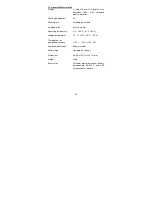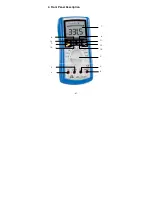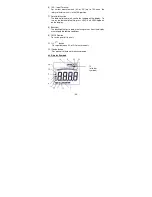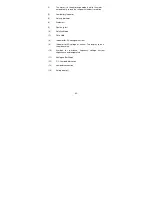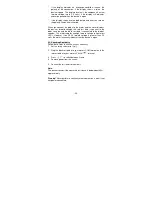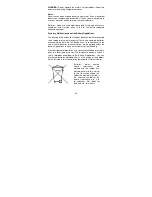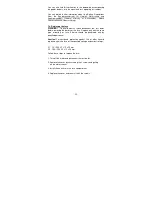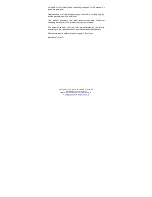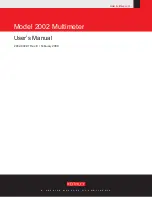
1. Set the rotary selector to the µA/mA range. If you do not
know the current level, set it to the highest position and
reduce the setting as needed to get a reading.
2. Press
°
)))
to select between DC and AC.
3. Plug the black test lead into your meter’s COM terminal and the
red test lead into your meter’s µA/mA or 10A terminal.
4. Remove power from the circuit under test and then break the
circuit at the appropriate point.
5. Connect the test leads in series with the circuit.
6. Apply power and read the current. Your meter displays the
current value.
Note:
If you see the meter for DC current, “-” appears or
disappears. This indicates the polarity of the measured current.
6.3. Measuring Resistance
WARNING!
* Never connect the test leads to a source of voltage when
you have the selected the OHMS function and plugged the test
leads into the V/
Ω
/Hz/
-terminal.
* Be sure that the circuit under test has all power removed
and that any associated capacitors are fully discharged before
you make a resistance measurement.
The resistance measuring circuit compares the voltage gained
through a known resistance (internal) with the voltage developed
across the unknown resistance. So, when you check in-circuit
resistance, be sure the circuit under test has all power removed (all
capacitors are fully discharged).
-48-



